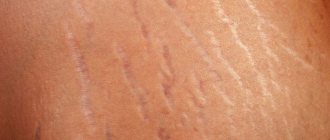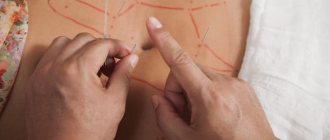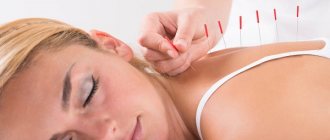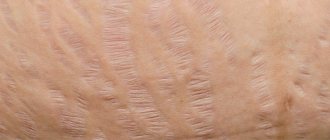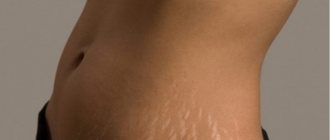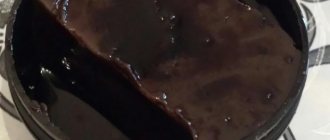Causes of red moles
The exact reason why red moles appear on the body is unknown; it may be a predisposition due to a genetic factor. But there are other reasons:
- pregnancy;
- exposure to chemicals;
- some diseases, including infectious ones;
- unsuitable climate (too hot or cold)
- mechanical damage to the skin, such as a bite or cuts, in which pieces of skin are not completely torn off.
Their manifestations are also possible at a more mature age, this is due to a gradual decrease in immunity. Neoplasms occur in 75% of the population over the age of 60 years.
It is impossible to somehow influence the appearance or non-appearance of red moles on the body, since they are inherent in us at the genetic level; if one of the parents had a lot of them, it means that the children will have a similar situation, and even identical maps of the location of nevi are possible.
Vascular network on the face: causes and treatment
The manifestation of rosacea is a fairly common phenomenon that affects both women and men all over the planet. The latter, perhaps, do not show this so much, which is why the weaker sex often turns to doctors and cosmetologists, because for a woman a woman’s appearance plays an important role in her inner sense of self.
Internal reasons for the appearance of such a mesh include:
- state of the vascular system;
- diseases and pathologies of the endocrine system;
- genetic predisposition and heredity;
- pathologies of internal organs (for example, the liver, gastrointestinal tract and even the heart);
- use of hormonal drugs and contraceptives;
- high blood pressure.
Even stress can provoke an intensification of these causes and a worsening of the situation: strong feelings are not the best tool for stable and smooth functioning of our heart and blood pressure. It has been proven that nervous situations have no less weak effect on the stomach and pancreas.
For those who smoke and drink alcohol (both of which also greatly affect the vascular system), the manifestation of blood vessels and the appearance of “stars” is a common occurrence. It’s not surprising that bad habits affect the functioning of our body and appearance. Nicotine and alcohol get inside and slowly destroy a healthy body. It's really sad when the effect of this exposure affects the skin.
Let's now touch on the external factors that cause vascular networks to appear on the face. How to get rid of their influence and help your vascular system work better - this topic deserves a separate discussion. Previously, we have already briefly listed the external causes of the appearance of “stars” and unnatural redness of the face, now we will study them in more detail. After all, if you eliminate them or reduce them to a minimum, you can, together with special cosmetic procedures, get rid of rosacea and visible blood vessels on sensitive skin.
It's no secret that both hot and cold water have a strong effect on our blood circulation and blood vessels. Many have been taught that a contrast shower is wonderful and useful. It is true, but not for everyone. For thin, delicate skin, it can become stressful and provoke unhealthy manifestations such as spider veins. Surely you are familiar with the feeling of heat on your cheeks when you enter a warm room from the cold? In essence, this effect is very similar to a contrast shower and also contributes to the appearance of rosacea.
If you are exposed to active sun too often and stay in direct sunlight for a long time, you, unfortunately, can also get spider veins. “What,” you ask, “shouldn’t sunbathe at all?” You can sunbathe, get natural ultraviolet light and vitamin D - all you need is:
- apply protective agents;
- soften and moisturize the skin afterwards;
- cover your face;
- Avoid the sun when the sun is at its zenith.
Such “tanning” is especially dangerous in countries that are closer to the equator. The influence of the sun is most dangerous there, and the consequences can be sad and result not only in the “stars” of blood vessels on the face and body, but also in blisters and burns. You need to be more careful with the bathhouse and steam room - places where external heat also accelerates the blood in our body.
We described the external temperature effect and partially answered the question of why vascular networks appear on the face. However, that's not all. Even the use of a strong and active scrub if used incorrectly, chemical peeling can injure the skin, make it thinner and weaker, severely disrupt the top layer, allowing red blood vessels to come to the surface. But the risk of rosacea may also occur for those who protect themselves from the sun and scrubs. The group of potential “victims” also includes those who lead a sedentary lifestyle, are overweight, or, conversely, expose themselves to excessive physical activity. All this has a direct connection with blood circulation, the heart and the load on blood vessels.
Locations
An increase in the growth of moles is observed in people aged 0 to 20 years, and then from 45 years and older. The rest of the time they appear, but not as actively as in the first and last phases of life. Typically, red moles appear on the upper body, arms, legs and shoulders. Their favorite places are also the head, feet, and hands. They can be located throughout the body, and it is impossible to predict their subsequent locations. Their red color comes from the accumulation of small blood vessels at the base, which supply them with blood.
Types and classification
Moles have two main types:
- Pigmented. These include flat, often brown, nevi.
- Vascular, which are formed from changes in the structure of blood vessels.
They are also:
- Congenital - divided by size: small, medium and large.
- Acquired, divided into three types depending on the location of melanocytes in the layers of the epidermis.
- Hanging ones, they are also called papillomas.
There are invisible nevi that appear changing color over time. Also wandering, which change their location, appearing in one place or another. It is advisable to keep track of the location of your moles.
Are red moles dangerous?
Signs to pay attention to if small red moles appear:
- Color. If it is uneven and begins to change, this is a reason to visit a doctor.
- Inflammation around the formation, that is, redness in the form of a halo around the mole.
- An increase in the size of the mole or its thickening.
- The appearance of cracks and ulcers on the body of the mole.
- Hair loss if it grew from a mole.
- The appearance of itching, burning or tingling in the place where the mole is located.
- A change in the edges of the nevus also indicates that it is time to visit a specialist.
An accurate diagnosis can be made by a dermatologist or oncologist, and you can and should turn to them for help. Nevi are not dangerous as long as they are in a stable condition, in which case you can wait to see a doctor.
Red moles in children
For most people, the bulk of moles appear in the first 20 years of life, then the formation of moles (nevi) subsides. They also tend to sometimes disappear on their own, and this happens due to the fact that the blood vessels supplying the mole dry out or become clogged. One in 100 newborns are already born with small red moles on their body, and they are considered more prone to change and develop into melanoma. This red neoplasm that rises slightly above the surface of the skin is called a Spitz nevus.
Children can also be born with large blue spots on their backs; they are called Mongolian spots and are most often found in children with Asian roots. Any moles are often injured, especially in childhood. This can cause complications, so it is advisable to sometimes see a doctor, and also try to protect children from such injuries.
Medical correction of red moles
The doctor, after conducting an initial examination and the necessary diagnostic measures, will make a conclusion regarding the likelihood of malignancy of the red mole. Based on this diagnosis, a strategy for further therapeutic actions is developed. If a red mole does not pose an oncological threat and is located in a closed area of the body, its removal is not necessary.
In cases where the red nevus causes aesthetic or physiological discomfort to the patient, it can be removed using modern hardware techniques, the priority among which is laser destruction. This method of removing red moles guarantees painlessness and safety for the patient, and also has a low level of trauma.
Medical offers its patients the latest expert-class medical equipment that meets the most stringent European standards. Effective therapy, high-quality medical service and affordable prices are the main principles of our clinic.
Find out the cost of the procedure “Removal of tumors”
Do red moles need to be removed?
Not only is it possible, but it is also necessary. If the hemangioma increases in size, changes shape or color, this is, of course, a direct indication to see an oncologist as soon as possible for further examination, and removal if necessary. Of course, not using artisanal or folk methods, but with the help of modern specialists. If the mole behaves quite calmly and does not change shape or color, then most likely there is no need to be afraid and you can postpone removing the moles.
Diagnostics
In medicine, there is a general method for diagnosing skin tumors. These include an initial examination and recording of all patient complaints (history). If a malignant tumor is suspected, an MRI or radiography is prescribed. All data obtained is analyzed and conclusions are drawn, on the basis of which a preliminary diagnosis is made. The main and final point in making a diagnosis is the histological method (biopsy). It is a microscopic sampling of tissue from the body of a mole, and is done to identify the pathology of cells in the neoplasm.
Acne on the face: causes and methods of correction
Ekaterina Turubara, Vichy brand expert, dermatologist, answers:
Is it possible to sunbathe if acne recurs on the face?
There is an opinion that sun rays can suppress the activity of the sebaceous glands and enhance superficial exfoliation, improving the condition of problem skin. However, in high doses, ultraviolet radiation enhances the comedogenic properties of squalene in sebum and causes a sharp decrease in immune defense, worsening acne. Therefore, during relapses of the disease, as well as during treatment, it is recommended to use photoprotective agents, which should be maximally adapted to skin with acne and seborrhea.
How often can peels and scrubs be used for oily skin?
Pay attention to the manufacturer's recommendations for using a specific care product. For daily use, mild cleansing products may be suitable, such as gels or lotions containing AHA and BHA acids, which have a gentle exfoliating effect.
What should you do if, after trying to squeeze out a pimple, the inflammation area has increased?
It is strictly not recommended to extract the contents of the rash yourself - this will only injure the skin, which aggravates the course of acne and increases the risk of stagnant spots. Active cosmetics for problem skin based on soothing, restorative ingredients will help fight such spots and even out skin tone.
What to do if your face is covered in acne and nothing helps?
It is recommended to consult a dermatologist
Vichy products in the article:
Gel Normadem Phytosolution (Normaderm Phytosolution) - intensively cleansing gel for washing, reducing oily skin
Gel Normadem Phytosolution (Normaderm Phytosolution) – mattifying gel for washing with volcanic perlite for oily, combination skin
Facial care Normaderm Phytosolution (Normaderm Phytosolution) - double-action corrective care for problem skin prone to oily skin
Lotion Normaderm (Normaderm) - pore-tightening lotion for intensive cleansing of problem skin
Vichy face mask – deep-pore-cleansing mineral clay mask
Day care Normaderm (Normaderm) - gel-cream for problem skin with the first signs of aging
Micellar lotion Normaderm (Normaderm) – micellar lotion for removing makeup 3 in 1 and cleansing oily problem skin
Mattifying care Capital Soleil (Capital Soleil) - daily matting care for oily problem skin 3-in-1 SPF50+
Methods for removing red moles
If the mole does not bother you in any way and is not located in high-risk areas, that is, on the arms, feet, or head and back, then it is quite possible not to remove it.
If the hemangioma bothers you, then it can only be removed by specialists, a dermatologist or oncologist. You should not take the risk of removing a nevus from a cosmetologist and exposing the incorrectly removed hemangioma to the risk of growth or the risk of infection.
There are several common procedures for removing them.
- Electrocautery. The nevus is burned with an electric current delivered using a small instrument. The grounding block will be placed somewhere so that the rest of the body is not exposed to electricity.
- Cryosurgery. The mole is frozen using liquid nitrogen. It is destroyed by extreme cold. Liquid nitrogen is sprayed for 10 seconds, the problem is solved in one session. This method is quick and relatively simple. The wound also does not require special care.
- Laser surgery. This procedure uses a concentrated yellow laser beam that emits enough heat to destroy the nevus from the inside. This method is quick and is used on an outpatient basis, meaning it does not require subsequent hospitalization. Depending on how many moles will be removed, one to three procedures may be required. There may be small scars that will disappear within 10 days.
- Surgical method. This is the process of removing a nevus from the upper part of the skin by cutting the lesion and then applying sutures. It is not a frequently used method, and after such an intervention there are scars.
In any case, if you have concerns and questions about why red moles appear, you need to see a doctor, if only to reassure yourself with good tests. Because unexplained questions create stress, which in turn contributes to a decrease in immunity. Be healthy.
Laser treatment of red skin defects
Everything you wanted to know about laser treatment of skin defects caused by abnormal structure or rupture of blood vessels
Who needs laser treatment for skin defects caused by abnormal structure or rupture of blood vessels?
This procedure can be prescribed to all people who have reddish and pink spots on their face due to ruptures or deformation of blood vessels. Telangiectasia is the medical name for a condition in which blood vessels on the face appear through the skin in brittle, mesh-like lines. The reddish mesh is most noticeable in people with skin types 1 or 2. Blood vessels can rupture or become deformed due to mechanical damage, which can be caused by washing, scrubbing, or squeezing out blackheads. In addition, the situation can be aggravated by retin A, sunscreen, constant use of steroid creams and nasal surgery. People who suffer from diseases that cause tears in connective tissue, such as lupus, are prone to the appearance of red and pink spots on the face; people with birthmarks, port wine stains and angiomas on the face.
WHAT EFFECT DOES LASER HAVE ON BROKEN VESSELS?
The laser beam penetrates the skin as if it simply does not exist and destroys red blood spots that are located outside the vessels in the subcutaneous tissues. The laser is able to destroy damaged blood vessels and the hemoglobin accumulated in them without affecting the skin.
HOW SHOULD I PREPARE FOR THE PROCEDURE? Before the procedure, avoid sunlight, under the influence of which melanin is produced in the cells, which can interfere with the clear definition of the boundaries of damaged blood vessels.
HOW LONG DOES THE PROCEDURE TAKE?
The procedure lasts only a few minutes.
WHAT WILL I LOOK IMMEDIATELY AFTER THE PROCEDURE?
If the procedure was performed using a color pulsed laser, you will have bruises on your face that can be hidden with makeup. When using other types of lasers, the number of bruises and their severity are noticeably reduced.
HOW MANY PROCEDURES DOES THE COURSE OF TREATMENT INCLUDE?
After the first procedure you will notice the results of the treatment. The full course of treatment usually includes several procedures.
WHAT SHOULD YOU DO AFTER THE PROCEDURE? After the procedure, you only need to apply makeup, and then only if you have bruises. To speed up the resolution of bruises, your doctor may prescribe one of the creams containing vitamin K. You should avoid the sun for several days after the procedure, as ultraviolet rays can have a negative effect on more sensitive skin and cause the appearance of age spots.
FOR WHAT TIME WILL THE ACHIEVED RESULTS BE SAVED?
The results achieved may last for several years or longer if you do not use drugs such as Renova and Retin A, which help increase the number of blood vessels. Do not overuse scrubs, exfoliants, colognes, or constantly expose your skin to ultraviolet rays.
ARE THERE ANY SIDE EFFECTS OR LIMITATIONS THAT MAY NOT SUBJECT ME TO THE INTRADERMAL MASSAGE PROCEDURE?
The only side effects are temporary bruising and age spots that resolve within a few weeks. When using new generation lasers, the likelihood of bruising is significantly reduced. There is a small risk of scarring where the laser is applied.
HOW MUCH DOES THE PROCEDURE COST?
The cost of the procedure can be several thousand rubles or more. The price of the procedure depends on the area requiring treatment and the number of procedures that make up the full course of treatment.
WHAT SKIN DEFECTS CAN BE CURED WITH LASER?
Rosacea is a chronic condition that causes red or blue patches to appear on the central part of the face. More than 14 million Americans suffer from this disease. Most of them are women aged 30-40 years. The causes of this disease are unknown. It is believed to have genetic roots. Rosacea mainly affects people with fair skin and light eyes. These are, as a rule, Irish, English and representatives of Scandinavian peoples. About 10% of Swedes have rosacea. Princess Diana also suffered from this disease. Rosacea becomes more noticeable under the influence of sunlight, wind, massage, hot baths, after consuming alcoholic and hot drinks, as well as dishes containing a large amount of spices. In addition to broken blood vessels, rosacea is also accompanied by acne that affects the nose and cheeks.
For rosacea, treatment consists of antibiotics such as tetracycline, topical antibiotics, mild steroids and topical medications. Metronidazole is intended to kill mites, which can form entire colonies on human skin, resulting in increased sebum production. In addition, metronidazole has a therapeutic effect on acne, acne and pustules that may accompany rosacea. Many women wear green makeup to hide redness on their skin.
Before laser treatment for rosacea was invented, the condition was treated with an epilation needle used in electrolysis. When treating with an epilation needle, there was a risk of complications if a high current was used, while a weak discharge did not give positive results.
The laser designed to treat blood vessels only detects red or pink blood vessels, so it does not cause any harm to the epidermis. You may experience minor discomfort during the procedure. You can return to work immediately after the procedure. If you have bruises, you can hide them with makeup.
Attention: do not confuse rosacea with acne, which can appear in adults. In addition to the face, acne often appears on the shoulders, neck and back, rosacea - only on the face. With acne, blackheads often appear with black heads, while rosacea is only red in color. These two diseases require different courses of treatment. It is also very important to be able to distinguish between these diseases because some medications used for acne can contribute to the development of rosacea.
Rhinophyma (red nose syndrome) is a condition similar to rosacea. Most often it affects middle-aged and elderly men, usually Irish and Celts. The most famous person suffering from rhinophyma is Father Frost. As a result of this disease, the nose begins to deform, turn red and take on an ugly shape. This occurs due to the expansion of pores, the growth of sebaceous glands and blood vessels.
Many people, when they see such people, believe that they abuse alcohol, but this is far from the case, since alcohol can only temporarily cause external redness of the nose. The red color of the nose and its deformed shape are treated using different types of lasers.
Stretch marks usually appear after pregnancy, weight loss, or, conversely, rapid weight gain on the hips, abdomen and chest. Estrogen also plays a significant role in their appearance and increase. As the skin stretches, the strands of elastin and collagen break and become pink or red, then turn blue and eventually silver-white.
Coconut oil and other similar products have virtually no positive effect on stretch marks. Quite effective means for eliminating stretch marks are retin A and alpha acid hydroxide, used in conjunction with micro-abrasive removal of skin defects and laser treatment.
In order to get rid of pink or red stretch marks, you need to undergo a course of several procedures performed using a laser. This course of procedures lasts on average 6-8 weeks. After completing the full course of treatment, stretch marks may become almost invisible, but they will not disappear completely. Small stretch marks respond better to treatment, but they cannot be completely cured. After the first procedure, the results of treatment will become noticeable no earlier than two months later. Before you spend a lot of money on a laser stretch mark treatment procedure, you should first try out how the laser will work on your stretch marks on a small area of one of the stretch marks. Only if you are satisfied with the results achieved, you can begin to undergo the full course of treatment.
Scars and burn scars. Many people have scars on their skin after various surgeries, injuries and piercings. After several procedures, the scars become less noticeable. The laser heats the blood vessels, which accelerates the metabolic process, leading to stimulation of collagen production. To achieve the best effect, laser treatment of scars and burn scars is carried out in conjunction with steroid injections or the introduction of silicone or Mederma gel. Before undergoing the procedure, it is necessary to have a realistic idea of its capabilities, so as not to be disappointed with the results achieved.
Angiomas are networks of broken blood vessels. Angiomas appear on the central part of the face. Quite often, angiomas appear in women during pregnancy and disappear after childbirth.
If the appearance of angioma is not associated with pregnancy, then this disease will not go away on its own over time. Angioma can be removed using a laser.
Poikiloderma is the new name for a condition that causes redness in the neck. This disease most often occurs in women after menopause. The reasons for its occurrence are unknown. Redness on the neck is often accompanied by a burning sensation. Ultraviolet rays and deodorants have an irritating effect on poikiloderma. To eliminate red spots, several procedures are required. To prevent relapse of the disease, avoid sun exposure.
Port wine stains (port wine) and other birthmarks. Not everyone, like Gorbachev, is born with a port wine stain. Port wine stains are quite rare: only three children out of a thousand. They are caused by blood vessels being too close to the skin. They occur in equal proportions in boys and girls. Over time, port wine stains become rougher and darker, and small bumps may appear on them, which can bleed if damaged.
Port wine stains can be removed with a laser for people of any age. On average, removing a port wine stain requires 4-6 procedures, which can be completed over a period of 4 weeks. Each procedure does not last long and is painless. The entire course of procedures can be gradually completed during lunch breaks. The pulsed color laser acts very gently and accurately, so scars from its impact are extremely rare. With the help of such a laser, port wine stains can be removed from children as young as two weeks old. The number of treatments required to remove a port wine stain depends on the color and location of the stain. For example, a stain located on the face or neck can be removed fairly quickly. Spots located on the forearms, arms, legs or feet require a large number of procedures.
Some spots, even after completing the full course of treatment, do not completely disappear.
Warts. When warts are removed using traditional methods: burning, freezing, etc., scars remain in place of the warts. When using new generation lasers, warts are removed without a trace. The laser penetrates the blood vessels supplying the wart and heats them, destroying the wart virus. To completely remove a wart, a course of treatment consisting of 2-4 treatments is required, but there is no guarantee that laser treatment will remove the wart. Warts that are covered with calluses must be cleaned before undergoing laser removal procedures.
Heterogeneous vascular growths and bumps. Cherry angiomas are bright red in color, covered with growths, most often found on the torso. In 85% of all cases, they appear in middle-aged and elderly people. Small blue nodules made up of veins may appear on the lower lip, ear, and other areas exposed to sunlight. From a medical point of view, it is not necessary to treat such tumors. If you don't like the way they look, you can remove them in a few seconds using electrocautery or laser.
Psoriasis. This is a chronic disease of the skin tissue that affects millions of people. The origin of this disease is unknown. The disease manifests itself in the form of red spots appearing on the elbows, knees and other parts of the body. The word “psoriasis” comes from the Greek word p5opa515, which means “itching”. Psoriasis cannot be contracted by interacting with sick people. Laser treatment for psoriasis can be used in conjunction with traditional treatments such as steroids, oils containing vitamins A and D, ultraviolet light and various medications.
Despite the fact that the areas of skin affected by psoriasis contain many blood vessels that absorb the rays of pulsed color lasers well, excimer lasers are considered the best for the treatment of psoriasis.
Acne. Pulsed color lasers are the most effective in treating inflamed acne. These lasers can be used to target small blood vessels that supply blood to acne-affected tissues.
Wrinkles. Some types of lasers can also be used to reduce the appearance of wrinkles. The effect of a laser beam promotes the reproduction of collagen in tissues and increases the amount of elastic tissue.
There are such a huge number of diseases that cause redness on the skin that almost every person encounters them at one time in their life. That is why everyone should know that nowadays red spots on the skin of various origins can be eliminated with the help of a laser. Thanks to the latest treatment methods, you no longer have to put up with such skin imperfections! To get rid of them once and for all, all you need to do is visit a dermatologist or plastic surgeon during your lunch break.

